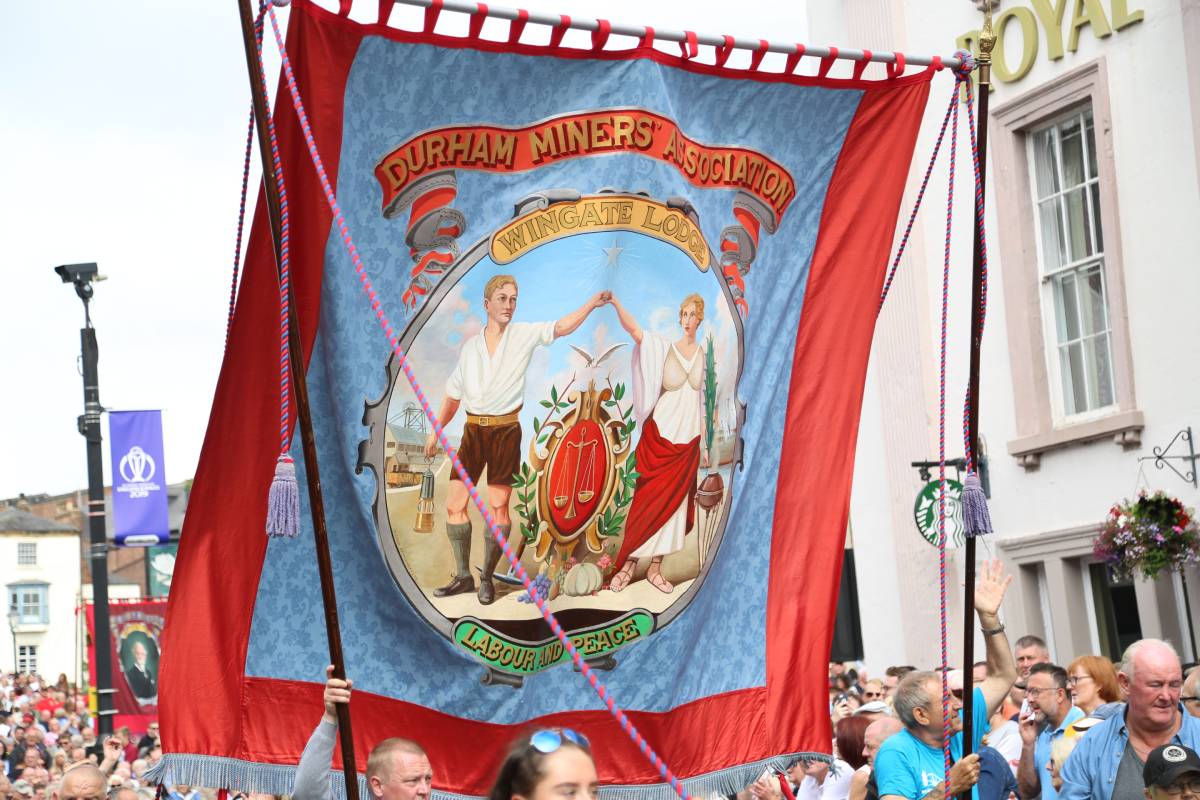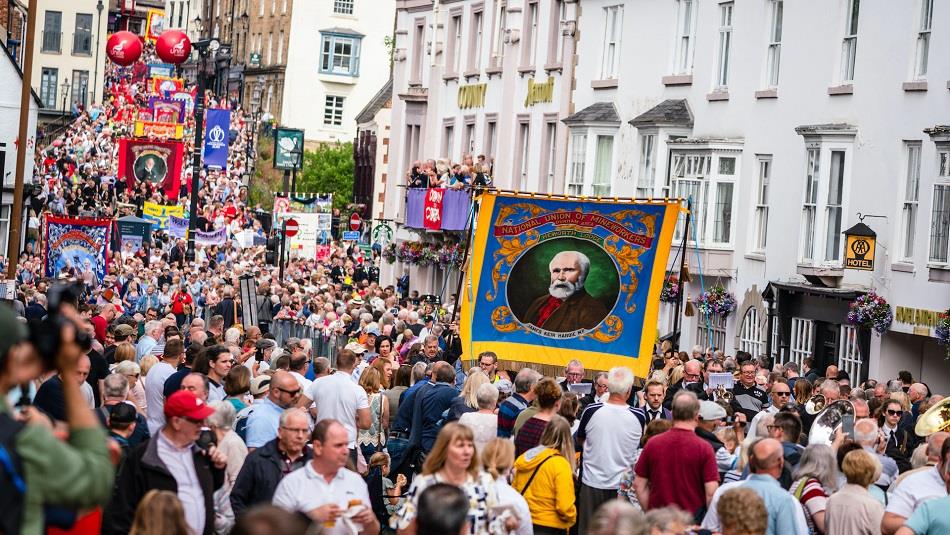By Maria Papagiannopoulou,
On the second Saturday in July, the city of Durham, England, hosts a sizable annual gathering and labour celebration called the Durham Miners’ Gala. It is connected to the Durham Coalfield’s history of coal mining (and in especially, the history of miners’ trade unionism), which spanned the entire conventional County of Durham. Locally, it is known as “The Big Meeting” or “Durham Big Meeting.”
Its centrepiece is a parade of banners that are marched to the ancient Racecourse, where political speeches are given, usually each accompanied by a brass band. A miners’ service is held in Durham Cathedral in the afternoon, and any new banners may be blessed during this service.
The coronavirus epidemic forced the cancellation of the 2020 and 2021 Galas.
The miners’ trade unionism, the first of which was formed in 1869, gave rise to the gala. The first gala was hosted by the Durham Miners’ Association and took place at Durham’s Wharton Park in 1871.
It eventually grew into the biggest unauthorised union and miner meeting in the entire United Kingdom. More than 300,000 people attended the event at its height, which is more than seven times Durham’s own population.
Large unions of men would march on the highways going into the city to commemorate the event, and banners would usually be carried on foot from its own colliery into Durham. The gala was postponed due to strikes in 1921, 1922, and 1926, the First World War from 1915 to 1918, and the Second World War from 1940 to 1945. However, the first and only time the gala was held somewhere other than Durham City was in 1926. The event was organised by miners in the village of Burnhope, located about 7 miles north of Durham. 40,000 miners from all around the country marched up the hill to the village where Miners’ Federation of Great Britain General Secretary A. J. Cook was to speak.

The gala was postponed in 1984 as a result of the 1984–85 miners’ strike, which saw miners in the Durham Coalfield go on strike. The number of people attending the gala was decreased due to the closing of collieries in County Durham, particularly following World War II. Nevertheless, the banner was frequently marched even when a colliery was shut down. Due to the COVID-19 pandemic, the Durham Miners Association called off the event in 2020.
In 1983, the centenary gala took place.
The Durham Coalfield no longer has any deep mines, compared to over a hundred at its height. The event is still planned in spite of everything.
One of the largest political meetings in Europe, the 122nd gala attracted over 50,000 attendees in 2006 and almost 100,000 in 2009. Banners are still carried during the morning parade to the racecourse, when speeches are still given (recent noteworthy speakers have included Tony Benn, Billy Bragg, and Ken Livingstone), and then in the afternoon they are carried to the cathedral.

Ed Miliband, the leader of the Labour Party, spoke at the 128th gala in 2012; the previous Labour Party leader to do so was Neil Kinnock in 1989. He complimented the occasion and called it “a great North East tradition” while criticising the coalition administration of the Conservatives and Liberal Democrats for having “lost a generation of young people.” All four candidates for the Labour leadership in 2015 attended the banquet, but only Jeremy Corbyn was asked to deliver a speech because he already had the support of the Durham Miners’ Association. Every year from 2016 through 2019, Corbyn addressed the gathering as Labour leader after winning the leadership race.
A full-length documentary on the event was released in September 2019. The Big Meeting played in theatres all around the UK and garnered a number of favourable reviews, including a four-star review from Peter Bradshaw of The Guardian, who called the movie a “rich, heartfelt, and intimate tribute to the Durham Miners’ Gala.”
The gala was postponed because to the COVID-19 epidemic and was held again in 2022. The gala had the highest turnout of 200,000 since before the miners strike. Mick Lynch, general secretary of the RMT union, delivered one of the keynote addresses.
The majority of the National Union of Mineworkers lodges in the Durham Area are represented by banners during the gala. However, other unions have also been represented, especially in recent years, along with union flags from other regions of the UK, like South Wales and Yorkshire NUM lodges.
They hang from a cross member from which people carrying them hold guide ropes. They are rectangular, made of silk, and manufactured. When a person had died in the pit the year before, banners were customarily covered in black fabric. On notable anniversaries of catastrophes at the colliery they represent, they are now draped in black cloth following the closure of pits around the county.
Many banners, including those with depictions of Marx, Lenin, and other notable figures like politicians or miners’ leaders, contain overtly socialist or communist references. The 1955 edition of Chopwell’s “Little Moscow” banner is the only one including pictures of both Marx and Lenin as well as the hammer and sickle. The 1935 Chopwell banner is still believed to be located in Moscow after touring the Soviet Union. Socialist sentiments can also be found in the captions of images, such as “Socialism through evolution” and “Need before greed” (on the banner of Blackhall Lodge).
Some banners feature Christian themes with socialist overtones.
Reintegrating collieries that had left the gala has been a part of this. Some banners, like the one from Spennymoor, depict an entire former colliery complex rather than a single one. The Heritage Lottery Fund has provided cash for these.
References
- Durham Miners’ Gala 2023, thisisdurham.com. Available here
- Gala information. friendsofdurhamminersgala.org. Available here




